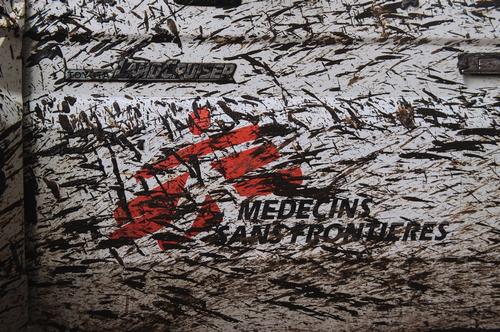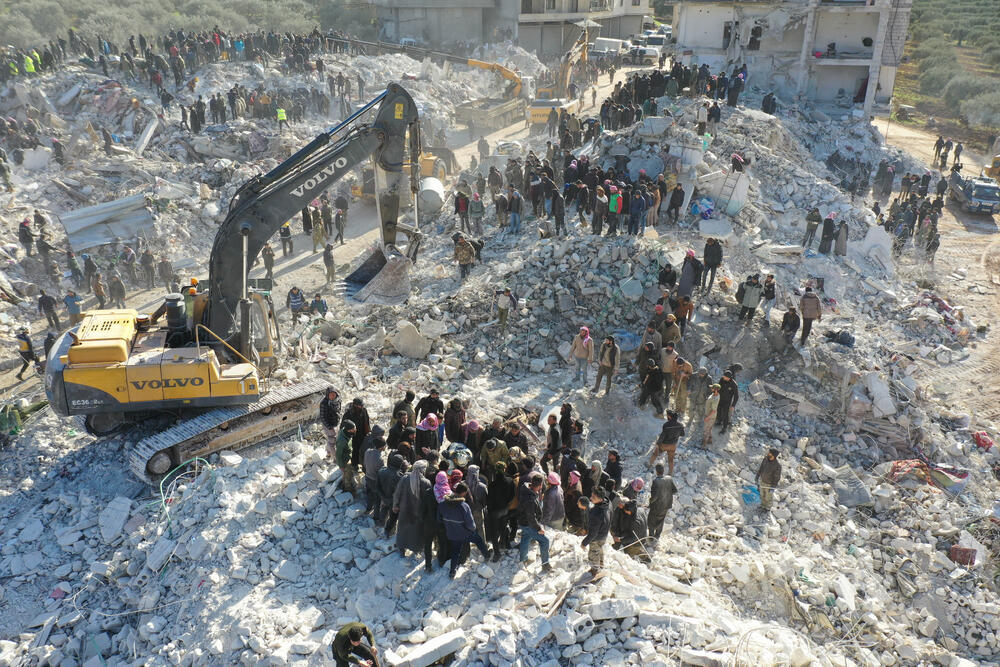Natural disasters
Catastrophic events such as earthquakes, cyclones or tsunamis can overwhelm entire communities, cities or regions within minutes.
Thousands of people may be killed and many more traumatised by the loss of family, friends and homes. However, while the disaster may occur in moments, the humanitarian consequences may last for months and even years.
Since 1971, MSF teams have taken life-saving emergency action in many of the most devastating events to hit the headlines.
Our latest responses: Natural disasters



How does MSF respond to a natural disaster?
Médecins Sans Frontières / Doctors Without Borders (MSF) teams are experts in delivering rapid and effective medical aid in humanitarian emergencies.
Our decades of experience and unrivalled independent funding mean that when a disaster hits, we can mobilise a global effort to act fast and save lives.
In a highly destructive event such as an earthquake, the number of people requiring emergency medical care can be staggering.
Our initial response may include trauma care for patients with life-threatening ‘crush injuries’ or urgent surgical interventions.
We may also dispatch mobile clinic teams to reach communities in severely impacted areas that would otherwise be cut off from care. And, after such a traumatic event, the mental health needs of survivors can be complex and severe.
Where MSF is not already operating in the area, we can deploy emergency ‘explo teams’ within hours.
Vital public infrastructure may be damaged or completely compromised, shutting people off from clean water and functioning toilets.
MSF water and sanitation specialists can get to work trucking in fresh supplies for thousands of people at once, establishing latrines or managing waste, all to avoid the spread of disease.
In events such as tsunamis or major tropical storms, a landscape transformed by water can be particularly high-risk – leading to an explosion in mosquito-borne disease, while cholera outbreaks can quickly begin from contaminated water.
On top of the threat of water and vector-borne disease, the search for shelter can lead huge numbers of survivors towards crowded camps and shelters.
Here, with access to healthcare services limited, infectious diseases such as measles or respiratory infections can spike. At the same time, patients previously receiving care for long-term conditions like diabetes or hypertension may deteriorate without regular and reliable medication and care.
MSF mobile clinic teams will work to reach displaced people where they are, providing treatment and referrals for the most widespread conditions.
A major natural disaster can damage or destroy existing hospitals and healthcare clinics, while an influx of survivors may overwhelm those still able to treat patients.
MSF field hospitals – including mobile operating theatres – may need to be deployed to support struggling facilities, while shipments of medical supplies and the arrival of generators and water trucks can keep critical services running until rehabilitation work can begin.
MSF teams are often among the first humanitarian responders on the ground for one key reason: because we are already there.
Worldwide, in many places vulnerable to natural disasters, MSF teams may have been present for years, running long-term medical projects.
Behind this, our robust and far-reaching logistics network enables us to dispatch emergency relief medical supplies from our state-of-the-art warehouses to the crisis zone within hours of an event. This includes pre-packaged ‘kits’ that cover everything from maternity care to our innovative inflatable hospitals.
Spotlight: Emergency funding
Our ability to launch an emergency response to a natural disaster is built on the incredible support of our donors and the trust that we will go where the need is greatest.
MSF’s transparent funding model relies on the power of donations without restrictions – that is, money given directly to our general funds. This gives us unrivalled independence.
This means we don't always need to launch a charity appeal when a humanitarian emergency is in the news or wait for funding to be cleared. Instead, our teams around the world can act fast with valuable flexibility.
When we do solicit funds from the public specifically for a single crisis, such as a natural disaster, we take the decision very seriously.
We cautiously assess the often chaotic situation on the ground, our operational budget and the interest of our supporters and the wider public. We then carefully ensure that their funds will always be spent in a responsible, effective and innovative way.
Accountability is essential, especially in an emergency.

Help us prepare for the next emergency
How we work
We are a global humanitarian movement of 51,000 staff responding to healthcare crises in more than 70 countries. Discover how we work and learn more about the specialist support we provide from the UK.
